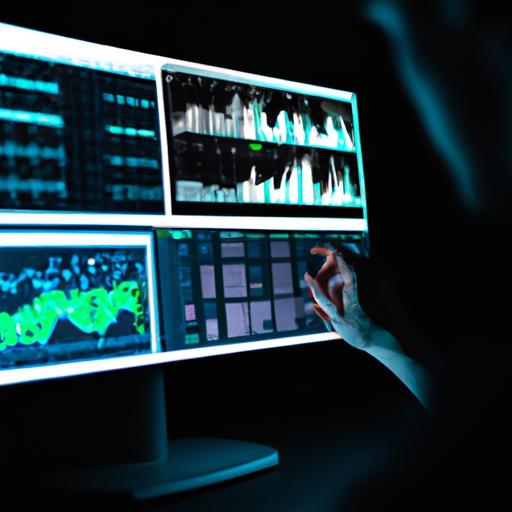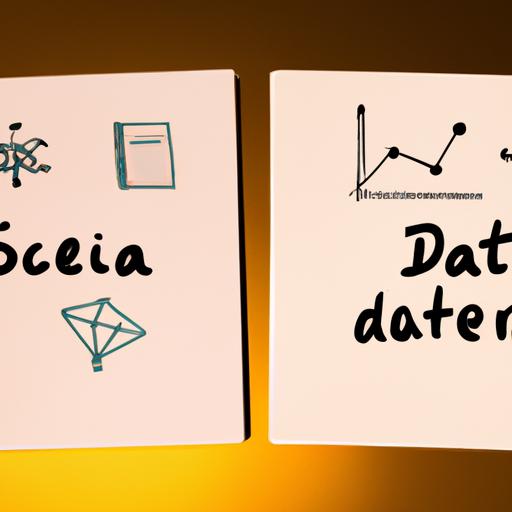Introduction

In the vast expanse of the digital world, data reigns supreme. Every click, every interaction, and every transaction generates a trail of valuable information. It is within this realm that data analytics and data science emerge as the guiding lights, illuminating the path to informed decision-making. But what sets them apart? How do these two disciplines converge and diverge? Join me as we embark on a journey to unravel the mysteries of data analytics and data science.
Data analytics, the art of extracting insights from data, holds an indispensable role in today’s digital landscape. It involves examining vast datasets to identify patterns, trends, and correlations that can empower businesses to make data-driven decisions. By leveraging various techniques and tools, such as statistical analysis and data visualization, data analytics enables organizations to unlock the hidden potential within their data.
On the other hand, data science encompasses a broader spectrum, combining elements of mathematics, statistics, and computer science to delve into the intricacies of data. It encompasses the entire lifecycle of data, from its collection to its interpretation, to derive meaningful insights and predictions. Data scientists possess a unique blend of expertise in programming, data manipulation, and statistical modeling, enabling them to extract valuable knowledge from complex datasets.
While data analytics primarily focuses on the examination of historical data to uncover patterns and trends, data science takes a more comprehensive approach. Data scientists not only explore the past but also strive to predict future outcomes by building sophisticated models and algorithms. This predictive element sets data science apart, as it allows organizations to anticipate trends, gain a competitive edge, and make proactive decisions.
In the next section, we will delve deeper into the nuances of data analytics and data science, exploring the specific techniques and methodologies employed in each field. So, fasten your seatbelts as we embark on a thrilling journey into the realm of data magic. Are you ready to unlock the secrets hidden within the vast ocean of data? Let’s dive in!
Understanding Data Analytics

Explanation of Data Analytics
Data analytics is the process of examining and interpreting vast volumes of data to extract actionable insights. It involves applying statistical and mathematical techniques to uncover patterns, trends, and correlations that may otherwise remain hidden. By harnessing the power of data analytics, organizations gain a deeper understanding of their operations, customers, and market trends.
Techniques and Tools in Data Analytics
Data analytics encompasses a wide array of techniques and tools to transform raw data into meaningful information. Descriptive analytics provides a snapshot of historical data, helping organizations understand past performance. Diagnostic analytics dives deeper, identifying the root causes of specific outcomes. Predictive analytics employs statistical models to forecast future trends and behaviors, while prescriptive analytics suggests optimal actions to maximize desired outcomes.
To facilitate these analyses, data analysts utilize a range of tools and technologies. Statistical software packages like R and Python enable advanced statistical modeling and visualization. Business intelligence tools, such as Tableau and Power BI, provide intuitive dashboards and interactive reports. Additionally, machine learning algorithms and data mining techniques empower analysts to uncover valuable insights from complex datasets.
Importance and Benefits of Data Analytics
In today’s data-driven world, data analytics plays a critical role in decision-making processes across industries. By leveraging data analytics, organizations can make informed decisions based on evidence rather than intuition. It enables them to identify inefficiencies, optimize operations, and enhance customer experiences. Moreover, data analytics helps businesses identify emerging trends, enabling them to stay ahead of the competition and adapt to evolving market demands.
The benefits of data analytics extend beyond operational improvements. It empowers organizations to personalize marketing efforts, target specific customer segments, and optimize advertising campaigns. Through sentiment analysis and social media monitoring, businesses can gain insights into customer preferences, sentiments, and feedback, enhancing their products and services. Ultimately, data analytics serves as a catalyst for growth, innovation, and strategic decision-making.
In the following section, we will explore the captivating realm of data science, unraveling its interdisciplinary nature and the essential skills required to navigate this domain. So, buckle up as we embark on an exhilarating quest to decode the secrets of data science!
Exploring Data Science

Definition and Scope of Data Science
Data science, a multifaceted discipline, encompasses the extraction of insights and knowledge from data through the application of scientific methods, processes, algorithms, and systems. It goes beyond analyzing historical data and delves into the realm of predictive analytics, enabling organizations to anticipate future trends and make informed decisions. Data science serves as a bridge between various domains, combining elements of mathematics, statistics, computer science, and domain expertise to unlock the true potential of data.
The Interdisciplinary Nature of Data Science
Data science thrives on collaboration and draws upon diverse fields, making it an inherently interdisciplinary domain. It integrates concepts from mathematics and statistics to develop robust models and algorithms. Computer science plays a crucial role, providing the tools and techniques necessary for data manipulation, programming, and data visualization. Domain expertise is also vital, as it helps data scientists contextualize the findings and craft actionable insights for specific industries or sectors. This interdisciplinary approach ensures a holistic understanding of data and its applications.
Key Skills and Roles in Data Science
Data science demands a unique set of skills and expertise to navigate the complex landscape of data. A data scientist possesses a strong foundation in mathematics and statistics, enabling them to develop and apply advanced analytical techniques. Programming skills are crucial, with proficiency in languages such as Python or R, as they facilitate data manipulation and model development. Data scientists also need a keen eye for visualization, as effective data communication is vital for conveying insights to stakeholders.
Roles within data science can vary, ranging from data analysts who specialize in extracting insights from structured data, to machine learning engineers who develop and deploy advanced algorithms, to data architects who design the infrastructure for data storage and processing. Each role contributes to the larger data science ecosystem, ensuring that data is collected, transformed, and analyzed in a meaningful and efficient manner.
In the upcoming section, we will explore the differences between data analytics and data science, shedding light on their distinct objectives and methodologies. Prepare yourself for an enlightening journey as we dive into the depths of data-driven decision-making. Are you ready to witness the clash of the titans? Let’s continue our exploration!
Differences Between Data Analytics and Data Science
Objectives and Goals Comparison
Data analytics and data science may seem similar at first glance, but they possess distinct objectives and goals. Data analytics focuses on extracting insights from historical data to understand past trends, patterns, and correlations. Its primary aim is to provide actionable information to support decision-making processes. On the other hand, data science takes a more comprehensive approach, aiming to not only analyze historical data but also predict future outcomes. The objective of data science is to leverage advanced modeling techniques and algorithms to make accurate forecasts and proactive decisions.
Methodologies Distinctions
The methodologies employed in data analytics and data science also showcase their differences. Data analytics relies on various statistical techniques, data visualization tools, and exploratory data analysis to uncover patterns and trends in large datasets. The emphasis is on understanding the data and gaining insights through descriptive analysis. In contrast, data science incorporates a wider array of methodologies. It encompasses machine learning, predictive modeling, and advanced statistical techniques to build complex algorithms that can identify patterns, make predictions, and detect anomalies.
Applications in Different Industries
The applications of data analytics and data science span across numerous industries, showcasing their versatility. Data analytics finds widespread use in areas such as marketing, finance, and operations. For instance, in marketing, data analytics helps analyze customer behavior, optimize advertising campaigns, and personalize marketing strategies. In finance, it aids in risk assessment, fraud detection, and portfolio optimization. Data science, with its predictive capabilities, finds applications in areas like healthcare, cybersecurity, and recommendation systems. For instance, in healthcare, data science enables the development of predictive models for disease diagnosis and treatment planning.
In the subsequent section, we will explore the overlapping concepts and skills shared between data analytics and data science. By understanding their common ground, we can gain insights into their symbiotic relationship and the value they bring to the world of data. Are you ready to discover the shared secrets of these two remarkable disciplines? Let’s proceed!
